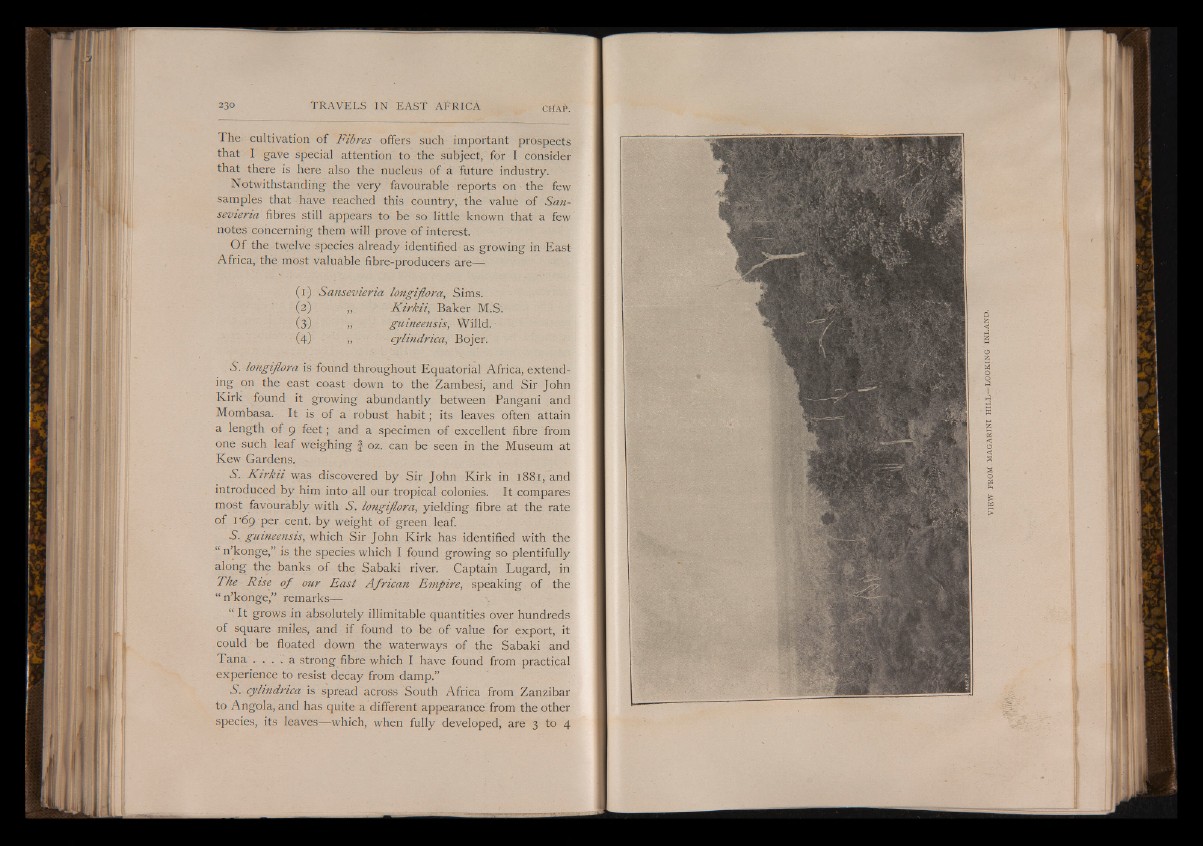
230 TRAVELS IN EAST AFRICA c h a A
The cultivation of Fibres offers such important prospects
that I gave special attention to the subject, for I consider
that there is here also the nucleus of a future industry.
Notwithstanding the very favourable reports on the few
samples that have reached this country, the value of San-
sevieria fibres still appears to be so little known that a few
notes concerning them will prove of interest.
O f the twelve species already identified as growing in East
Africa, the most valuable fibre-producers are—
(1) Sansevieria longiftora, Sims.
(2) „ Kirkii, Baker M.S.
(3) ,, guineensis, Willd.
(4) ■ „ cylindrica, Bojer.
S', longiflora is found throughout Equatorial Africa, extending
on the east coast dowm to the Zambesi, and Sir John
Kirk found it growing abundantly between Pangani and
Mombasa. It is of a robust habit; its leaves often attain
a length of 9 feet; and a specimen of excellent fibre from
one such leaf weighing § oz. can be seen in the Museum at
Kew Gardens.
S. K irk ii was discovered by Sir John Kirk in 1881, and
introduced by him into all our tropical colonies. It compares
most favourably with S. longiflora, yielding fibre at the rate
of 1’69 per cent, by weight of green leaf.
S. guineensis, which Sir John Kirk has identified with the
“ n’konge,” is the species which I found growing so plentifully
along the banks of the Sabaki river. Captain Lugard, in
The Rise o f our East African Empire, speaking of the
“ n’konge,” remarks—
“ It grows in absolutely illimitable quantities over hundreds
of square miles, and if found to be of value for export, it
could be floated down the waterways of the Sabaki and
Tana . . . . a strong fibre which I have found from practical
experience to resist decay from damp.”
S. cylindrica is spread across South Africa from Zanzibar
to Angola, and has quite a different appearance from the other
species, its leaves— which, when fully developed, are 3 to 4